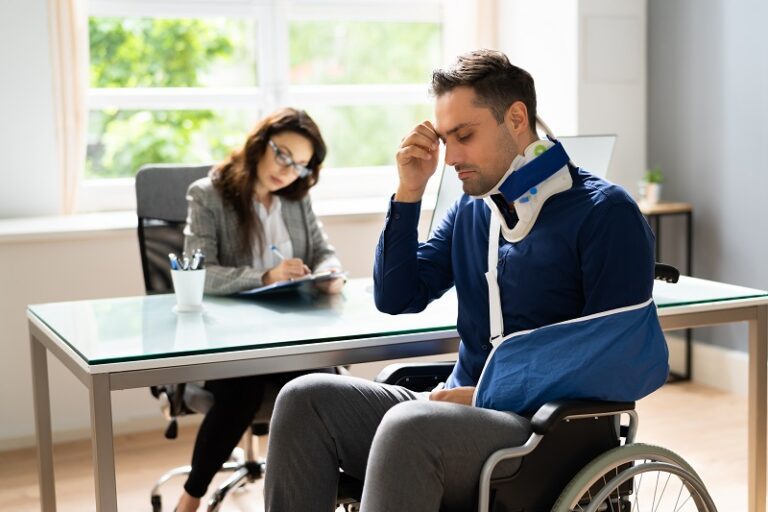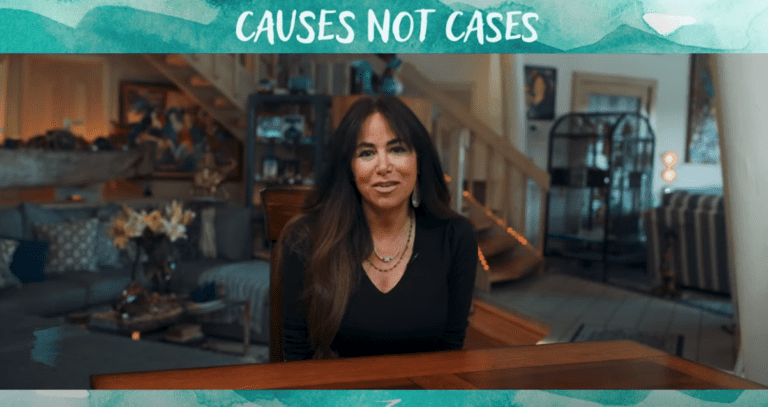A man was sentenced to decades in prison for a drunk driving accident that he caused nearly two years earlier, when the man chose to drive his Mustang while intoxicated. Traveling at more than 100 miles per hour on Interstate 15, the man slammed his car into a Toyota Corolla. An SUV driven by an off-duty police sergeant then struck the damaged Corolla. The Corolla burst into flames, killing two men inside. A female passenger who was severely injured in the accident was rescued by good samaritans. The officer driving the SUV was also injured in the car accident.
The drunk driver fled the scene, but police later found and arrested him. A court convicted him of second-degree murder, hit and run, drunk driving, and gross vehicular manslaughter. He had a previous DUI conviction. The man, sentenced to 30 years to life in prison, is also currently a defendant in a civil lawsuit filed by the victims’ families. If you have or currently are struggling with your own drunk driving accident case seek the legal council of Gomez Trial Attorneys. At the Gomez Trial Attorneys you can schedule a free consultation any time and discuss ALL of you legal options moving forward.
Every day, according to information from the National Highway Traffic Safety Administration (NHTSA), around 30 people die as a result of alcohol-related traffic accidents in the United States, which equates to one fatality every 48 minutes. While drunk driving accidents have lessened some in recent decades, they still account for the loss of more than 10,000 lives each year.
In San Diego, recent data indicates that in a year’s time 9,476 people died or sustained injuries in traffic accidents. Of the fatalities, 1,001 were due to an alcohol-related crash. 45 San Diego fatalities were the result of alcohol impairment by a driver under the age of 21. Recently, California ranked second for the highest number of fatalities due to alcohol-involved accidents, with 1,120 lives lost. Only Texas had a higher number of alcohol-involved traffic fatalities.
[lwptoc]
The Dangers of Alcohol Impairment
Alcohol is classified as a depressant due to its slowing effects on the central nervous system, which causes a decrease in motor coordination, reaction time, and intellectual performance. Alcohol impairment is a dangerous combination with driving, impacting a number of the functions that are required for the safe operation of a motor vehicle. In every state of the nation, except Utah, the legal limit of alcohol in one’s system is 0.08 grams of alcohol per deciliter of blood. Utah has recently lowered the legal limit to 0.05.
Impairment from alcohol does not begin at the 0.08 legal limit, however. It begins with your first drink and increases with every drink after. Here is a look at the different levels of impairment and how each level diminishes your ability to drive:
- 0.02, which equals roughly one drink: Some decline in judgment and in the ability to track a moving target. The ability to perform two tasks at once also experiences a decline.
- 0.05, the legal limit in Utah: Difficulty in focusing your eyes, impaired judgment, lowered alertness, reduced coordination, difficulty steering, and reduced response to emergency driving situations.
- 0.08, the legal limit in California and all other states except Utah: Poor reaction time; decline in the ability to detect danger; loss of judgement, self control, reasoning, and short-term memory; inability to control speed; impaired perception; and decline in the ability to process information, such as signal detection and surveillance.
- 0.10: Loss of the ability to maintain lane position and to brake properly, marked decline in reaction time, and slowed thinking.
- 0.15: Substantial impairment in vehicle control, inability to focus on the task of driving, and a decline in the ability to process visual or auditory information.
The impacts of alcohol on your ability to operate a vehicle safely aren’t just about how many drinks you’ve had, but other factors, including your gender, weight, and body’s ability to metabolize alcohol.
Alcohol’s impacts on a driver’s good judgment produce some of the most alarming dangers involved with drunk driving, such as:
- The inability to know that it is unsafe to be driving or to understand the importance of driving safely.
- The inability to control one’s speed.
- The failure to use seat belts.
- The inability to judge the distance between one’s car and other vehicles on the roadway.
- The failure to avoid distractions that could lead to an accident.
Alcohol-impaired driving is particularly risky for teenage drivers, as it combines with relative inexperience. About 70 percent of teenagers admit to drinking alcohol, and 60 percent of all teen deaths from car accidents involve alcohol. Drivers between the ages of 16 and 20 are seventeen times more likely to die in a motor vehicle accident when they have a blood alcohol content of 0.08 than they are if they have not been drinking.
The Societal Cost of Drunk Driving
In the most recent year for which this data is available, the economic cost of alcohol-related traffic accidents in the United States was $44 billion, the NHTSA noted. These costs include:
- Lost productivity
- Workplace losses
- Legal and court expenses
- Medical costs and emergency medical services
- Property damage
- Insurance premium increases
- Traffic congestion
These costs don’t include the loss of quality of life for people injured in drunk driving accidents, the NHTSA added. When those costs are added in, the societal costs of drunk driving top out at $201.1 billion a year.
When and Where Do Drunk Driving Accidents Most Commonly Occur?
Drunk driving crashes can occur at any time and on any type of roadway. However, there are places and times in which more alcohol-involved crashes take place. Here is the data, as offered by the NHTSA:
- Fatal alcohol-related crashes are more prevalent in the summer months of July, August, and September.
- About 55 percent of fatal drunk driving accidents occur in urban areas, while the remaining 45 percent occur in rural locations.
- 90 percent of fatal drunk driving accidents happen during clear or cloudy days. Very few of these accidents occur during inclement weather.
- 70 percent of all fatal drunk driving accidents occur during nighttime hours.
- Only 13 percent of fatal drunk driving accidents happen on interstates. The rest occur on non-interstate roadways.
- More than a quarter (28 percent) of fatal traffic accidents that happen on the weekends involve an alcohol-impaired driver.
How to Avoid Becoming a Statistic
While you can’t control the actions of every driver who is out on the roadway with you, there are some things you can control, including your own alcohol impairment as well as those you spend time with. Here are some suggestions for avoiding an alcohol-involved accident:
- Do not drink and drive. Arrange for a non-drinking friend to provide a ride for you in advance of the occasion during which you plan to drink, or schedule a rideshare to pick you up at a designated time.
- If you know that someone else has been drinking, do not allow him or her to drive. Take his or her keys and arrange for transportation with a sober driver.
- If you’re having a social gathering that involves drinking, make sure that each of your guests who have indulged in alcohol has a ride home with a sober driver.
- Know how to spot the signs of other drivers who may have been drinking, including making turns that are too wide, driving down the center of the road, weaving between lanes, driving too slowly, stopping at inappropriate times, driving on the wrong side of the road, or reacting slowly to traffic signals. If you suspect that another driver has been drinking, try to keep your distance and be ready to take quick and evasive action to avoid a collision. You can report a drunk driver by calling 911, or the designated number for your area, and providing such details as your exact location, the direction that the suspected drunk driver is traveling, as well as the make, model, and color of the vehicle that he or she is driving.
- Use four-lane highways whenever possible, as these provide your best option for putting distance between yourself and other drivers who may have been drinking.
- Avoid late-night travel, particularly on weekends, when a higher number of travelers have been drinking. Extra caution should be exercised when driving on holidays as well.
- Make sure that you and all of your passengers are buckled in every time you drive.
- Use caution when you’re crossing through intersections, as these are a common location for accidents caused by impaired drivers who fail to obey stop signs or traffic signals.
If You Were Injured by a Drunk Driver…
If you were injured in a car accident caused by a drunk driver, you may sue to recover financial compensation to cover your medical expenses by:
- Filing a claim with your own insurance company, if you have med-pay benefits in the policy you purchased.
- Filing a third-party claim with the at-fault driver’s insurance company.
- Filing a personal injury lawsuit against the at-fault driver and/or his or her insurance company.
- If the extent of your medical expenses and property damage relating to the accident is less than $10,000, you may also be able to file a claim in small claims court.
Contact an experienced personal injury attorney as soon after your accident as possible, to have a full picture of the legal options that are available to you. Regardless of television and movie portrayals, hiring a personal injury attorney to assist you with your case does not necessarily mean that your case is going to go to court. On the contrary, the majority of personal injury claims are settled before they ever see the inside of the courtroom.
Hiring an attorney provides you with valuable services that can help you maximize your compensation. Some of those services include:
- An explanation of the legal process of obtaining compensation for your injuries.
- A thorough examination of the facts of your case to determine all potentially liable parties and all insurance resources that may be accessed to obtain compensation.
- The establishment of a monetary value to your case that takes into consideration the medical expenses that are currently due, as well as those that will be likely in the future; lost wages due to being too injured to work or missing work for medical appointments; loss of future earning capacity or opportunities due to permanent disability arising from the accident; the cost of repairing or replacing your vehicle; as well as physical and emotional pain and suffering that you’ve incurred due to the accident.
- Skilled negotiation with insurance companies in pursuit of a settlement.
- The timely filing of a personal injury lawsuit in the absence of a satisfactory settlement offer.
- The deposition of witnesses.
- The use of medical and accident experts who can help make your case.
- Representation at all pre-trial and trial proceedings.
- Representation during any appeal attempts made by the defendant.
- Assistance in collecting your settlement or award.
To obtain compensation for injuries incurred in an accident with a drunk driver in California through either a settlement or a personal injury lawsuit, you must file your claim within a strict time limit. California does not have any restrictions on the amount of compensation that you can seek through a personal injury lawsuit, provided you had insurance at the time of your accident. If you did not have insurance, you are unable to claim non-economic damages, such as pain and suffering or emotional distress.

If the drunk driver who caused your accident was arrested and convicted, you are still able to file a personal injury lawsuit to collect compensation. In fact, the conviction is powerful evidence of the driver’s liability in a civil case.
If you were injured by a drunk driver, an experienced car accident attorney can meet with you and discuss the details of your case, then help you decide what to do next.
Gomez Trial Attorneys
655 West Broadway
Ste1700
San Diego, CA 92101
[619]-237-3490







